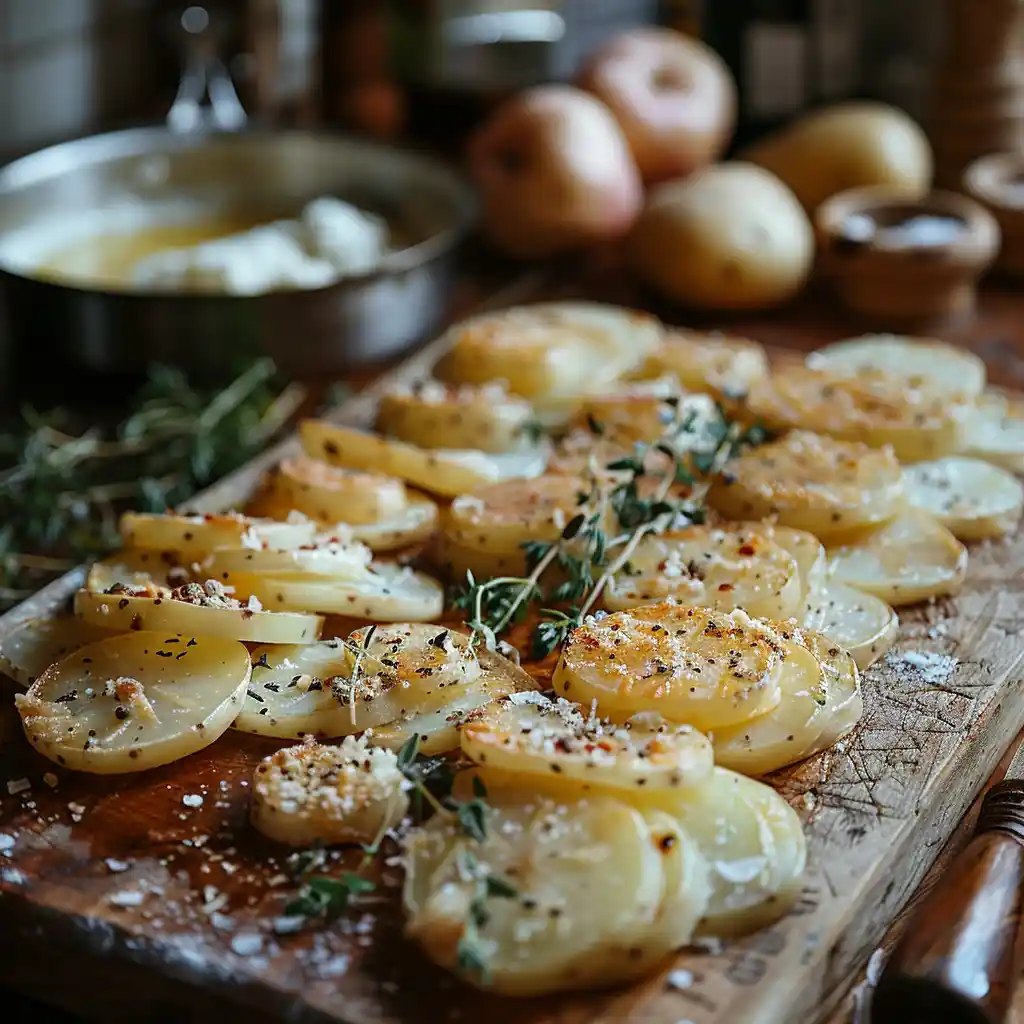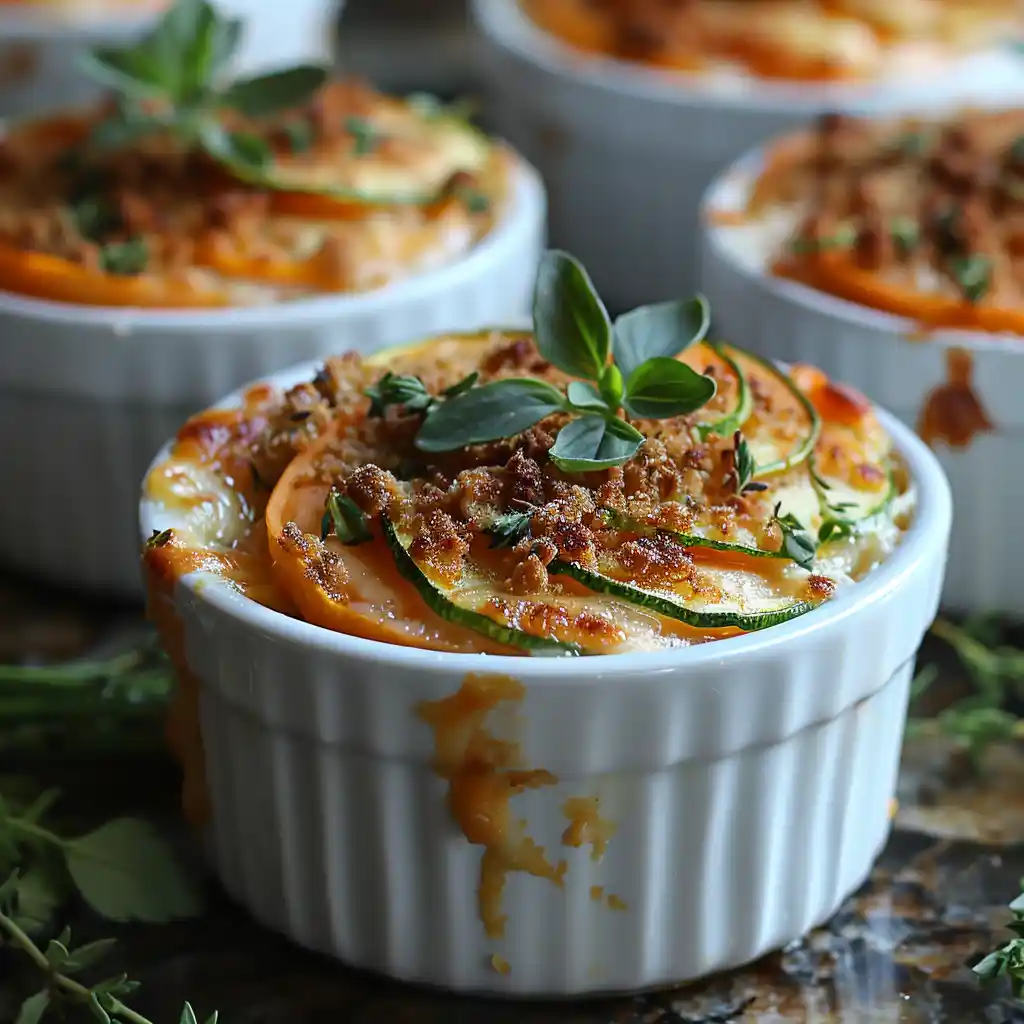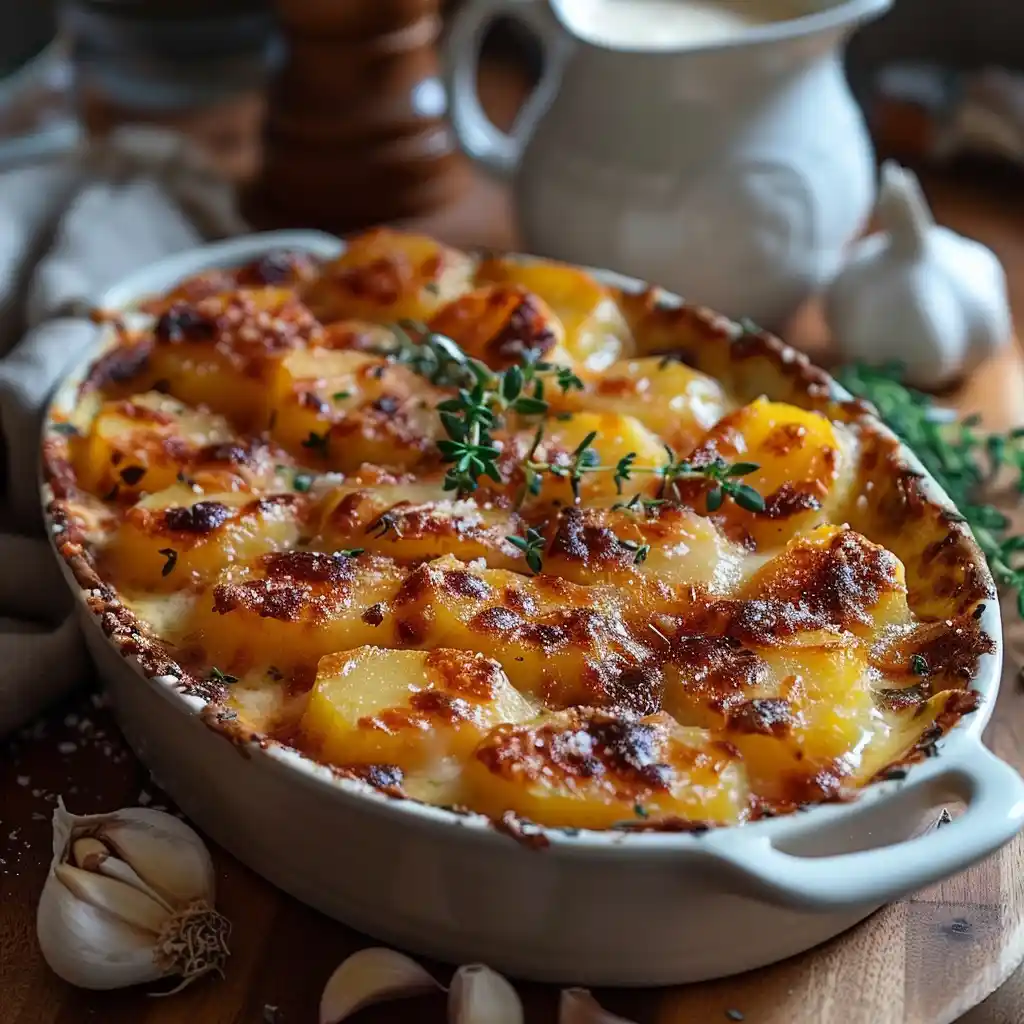Gratin—a term synonymous with elegance and comfort in French cooking—is far more versatile than you might think. Often, it conjures images of bubbling, golden-topped casseroles served at festive gatherings. But this dish, deeply rooted in French culinary history, is a celebration of textures, flavors, and techniques. From creamy potato gratin dauphinois to vibrant vegetable variations, gratin offers something for everyone. In this guide, we’ll explore the origins, key features, and types of gratin dishes while uncovering tips for mastering this French classic. Ready to dive in? Let’s uncover the magic of gratin.
Understanding the Concept of Gratin
What Is Gratin?
At its core, gratin refers to a cooking method where ingredients are baked until a crispy, golden crust forms on top. This crust is often achieved by adding breadcrumbs, cheese, or a drizzle of butter to the surface, then finishing the dish in a hot oven or under a broiler. While many associate gratin with potatoes, its scope extends far beyond. Vegetables, seafood, and even fruits can all be gratinéed—a testament to the dish’s adaptability.
The term “gratin” itself is derived from the French word gratter, meaning “to scrape.” Historically, this referred to scraping the crispy bits of food from the bottom of a pan. Over time, this evolved into a distinct cooking technique and became a hallmark of French cuisine.
Historical Background of Gratin
The story of gratin dates back to the 17th century, originating in the southeastern region of France, particularly in Dauphiné. The dish known as gratin dauphinois—a creamy, potato-based variant—was often served during royal banquets and special feasts. Over time, it gained popularity across France, becoming a staple in both bistros and home kitchens.
Interestingly, gratin was initially a way to use up leftovers. By layering ingredients and adding a crispy topping, home cooks could transform simple, humble ingredients into something spectacular. Today, gratin remains a celebration of both economy and indulgence.
Multiple Meanings of Gratin
In French culture, the word gratin carries symbolic weight. Beyond its culinary context, it’s often used metaphorically to describe the elite or “the crème de la crème” of society. This double meaning underscores how deeply ingrained the concept is in French heritage, blending food with cultural significance.
Gratin isn’t just a dish; it’s a culinary philosophy—one that champions simplicity, creativity, and a touch of extravagance. And as we’ll see in the following sections, there’s much more to this beloved classic than meets the eye.
Key Features of a Gratin Dish
The Iconic Golden Crust
One of the hallmarks of a gratin is its irresistibly golden and crispy crust. Achieved through a careful combination of ingredients and techniques, this crust is what truly sets gratin apart from other baked dishes. Whether it’s a sprinkling of breadcrumbs, a layer of grated cheese, or a drizzle of butter, the goal is the same: to create that signature texture and flavor that defines this classic French dish. The contrast between the crunchy topping and the creamy base beneath is nothing short of culinary magic.
The Role of Cheese and Cream
Cheese and cream play a central role in many gratin recipes, contributing to both the dish’s texture and flavor. While gratin dauphinois, the traditional potato-based gratin, relies heavily on cream to achieve its rich, velvety consistency, other variations use cheese to add depth and a slight tanginess. Some chefs even experiment with blue cheese or Parmesan for an added kick. However, it’s important to note that cheese isn’t mandatory—many gratins achieve their crust purely through breadcrumbs or even a light caramelization of the dish’s own ingredients.
The Importance of the Baking Dish
The choice of baking dish can significantly impact the success of your gratin. Traditionally, gratin is prepared in a shallow, ovenproof dish that allows for even cooking and maximum surface area for that all-important crust. Oval or rectangular gratin dishes are popular, but any shallow dish with good heat conductivity—be it ceramic, glass, or enamel—can work wonders. For home cooks exploring what does gratin mean in French cooking, choosing the right dish is a simple yet effective way to elevate their creations.
Types of Gratin Dishes
Gratin Dauphinois: The Classic Potato Gratin
When people think of gratin, they often picture gratin dauphinois. This classic version hails from the Dauphiné region of France and features thinly sliced potatoes baked in a mixture of cream, garlic, and butter. The dish is both indulgent and comforting, making it a staple at French dinner tables. The secret lies in layering the potatoes just right and ensuring they soak up the creamy goodness during baking.
Vegetable-Based Gratins
Gratin is incredibly versatile, and vegetables are a perfect canvas for this technique. Zucchini, squash, and even tomatoes can be transformed into delightful dishes with just a sprinkling of breadcrumbs and cheese. These versions are especially popular during the summer months when fresh produce is abundant. For instance, a zucchini gratin with a touch of Parmesan can be a light yet flavorful side dish that complements any meal.
Seafood and Other Unusual Variants
Gratin isn’t limited to vegetables and potatoes. Many chefs have taken this dish to new heights by incorporating seafood like scallops or shrimp. These variations bring a touch of sophistication to the humble gratin, making it suitable for dinner parties or special occasions. Another creative twist involves using winter squash or parsnips to add natural sweetness and depth to the dish. This adaptability showcases the endless possibilities of what does gratin mean in French cooking.
How to Prepare the Perfect Gratin

Choosing the Right Ingredients
When it comes to preparing a flawless gratin, choosing fresh, high-quality ingredients is key. The star of the dish—whether potatoes, zucchini, or seafood—should be as fresh as possible. For a classic gratin dauphinois, opt for waxy potatoes like Yukon Gold, which hold their shape during baking. If you’re using vegetables, ensure they’re firm and free of excess moisture to maintain the dish’s structure. Season generously but tastefully, allowing the natural flavors to shine through.
Preparation Techniques for Uniform Cooking
A great gratin requires precision, especially when slicing your ingredients. Consistency is crucial to ensure even cooking, so aim for uniform slices, about 1/8 to 1/4 inch thick. A mandoline slicer is a handy tool for this task, though a sharp knife works just as well with patience. Layer your slices at a slight angle to maximize surface area for the creamy mixture to soak in, ensuring every bite is tender and flavorful.
Flavor Enhancements: Herbs and Spices
Adding fresh herbs and spices can elevate a basic gratin to a gourmet experience. Consider infusing your cream mixture with garlic, thyme, rosemary, or nutmeg for added depth. These aromatics complement the richness of the dish without overwhelming its natural flavors. For vegetable-based gratins, sprinkling a touch of paprika or cayenne on top can add a subtle kick and enhance the dish’s visual appeal.
Baking and Broiling Techniques
The secret to a perfect golden crust lies in the final moments of baking. Once your gratin has cooked through—test it by poking a fork into the center—switch to a broiler setting for a quick burst of high heat. This step caramelizes the top layer, creating the signature crispy crust. Let the dish rest for about 10 minutes before serving to allow the flavors to meld and the structure to set.
Frequently Asked Questions About Gratin
Is Gratin Always Made With Cheese?
Not necessarily! While cheese is a common ingredient in many gratin recipes, it’s not a strict requirement. Traditional gratin dauphinois, for example, relies solely on cream to achieve its rich texture. The golden crust can be created using breadcrumbs, butter, or even a light dusting of flour. For those wondering what does gratin mean in French cooking, it’s all about that baked crust—not just cheese.
Can Gratin Be Made Without Cream?
Absolutely! Dairy-free or vegan gratins are gaining popularity and can be just as delicious. Substitute the cream with plant-based options like almond milk or cashew cream. To achieve a luscious texture, add a thickening agent such as nutritional yeast or flour. Layering vegetables with olive oil and herbs can also produce a lighter yet flavorful alternative.
What’s the Difference Between Gratin and Casserole?
Although similar, gratin and casserole differ in preparation and presentation. Gratins typically feature thinly sliced ingredients baked in a shallow dish, focusing on achieving that iconic golden crust. Casseroles, on the other hand, often have chunkier ingredients and are baked in deeper dishes. Both are hearty and comforting but cater to slightly different preferences.
For more inspiration, check out our recipe guide on Hachis Parmentier, another French classic that pairs beautifully with gratins.
Common Mistakes to Avoid When Making Gratin
Overloading Ingredients
One of the most frequent mistakes in preparing gratin is overloading the dish with too many ingredients. While it might be tempting to add multiple layers of vegetables, cheeses, and sauces, this can overwhelm the delicate balance of flavors and textures. A great gratin celebrates simplicity, allowing each component to shine. For instance, in a gratin dauphinois, the creamy potatoes are the star, and adding too much cheese or seasoning can overshadow their natural flavor.
To achieve the perfect dish, stick to a few complementary ingredients. For those exploring what does gratin mean in French cooking, this simplicity is central to its charm.
Uneven Slicing and Layering
Another common pitfall is uneven slicing, which can result in inconsistent cooking. Thin slices may overcook and turn mushy, while thicker ones might remain undercooked. Using a mandoline slicer or a sharp knife ensures uniform slices that cook evenly. Additionally, pay attention to how you layer your ingredients. For example, shingle the slices slightly to create space for the cream to seep through, enhancing the dish’s creamy texture.
Rushing the Crust
The golden crust is the defining feature of a gratin. However, rushing this step can lead to uneven browning or a soggy top. Always finish the dish with a few minutes under the broiler to achieve that perfect crunch. Keep a close eye on it, though—burnt crust can ruin the dish.
Why Gratin Remains a Timeless Classic
A Celebration of French Heritage
Gratin has stood the test of time because it embodies the essence of French cooking: turning simple ingredients into something extraordinary. Whether served at a rustic bistro or a lavish banquet, gratin represents both comfort and sophistication. Its versatility ensures that it remains a staple across generations, catering to a wide variety of tastes and dietary needs.
The answer to what does gratin mean in French cooking extends beyond its crispy crust and creamy layers. It symbolizes the ingenuity of French cuisine—using basic techniques to create dishes that are both satisfying and elegant.
Gratins in Modern Kitchens

Even as culinary trends evolve, gratin continues to find its place in modern kitchens. It adapts to contemporary preferences, whether through healthier vegetable-based versions or creative global interpretations. At its core, gratin celebrates the art of cooking, where every step—from slicing ingredients to achieving the perfect crust—is an opportunity to connect with the joy of food.
Ultimately, gratin’s timeless appeal lies in its adaptability. It invites experimentation while staying true to its French roots, making it a dish that feels both traditional and fresh. Whether you’re a seasoned cook or just beginning to explore the world of French cuisine, gratin offers endless possibilities to delight your taste buds and enrich your cooking repertoire.

